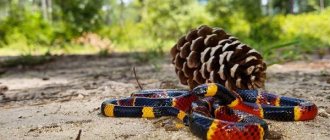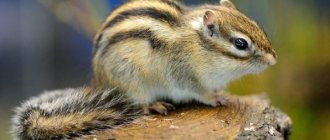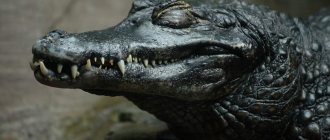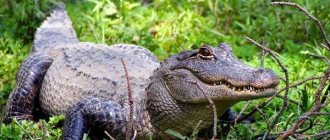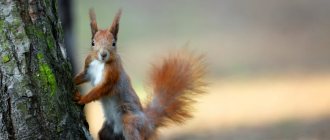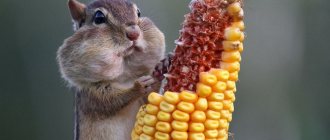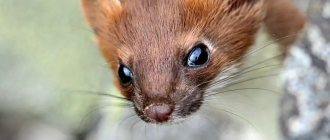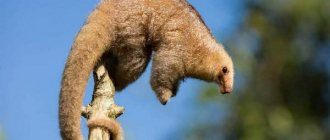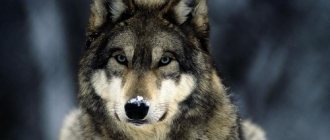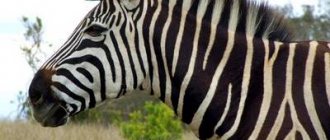Chipmunks are unusually cute and nimble little animals. Small rodents can be found not only in deep forests, but also in garden plots in parks and squares. Chipmunks are practically not afraid of humans and quickly get used to his presence. Little pranksters happily jump into your arms and take a treat.
Due to the fact that rodents are easily tamed, they are often kept as pets.
But it is worth considering that these are very active animals that need a lot of space to play, as well as the right diet and winter sleep. Therefore, before you take on a nosy fidget, you need to study all the available information and weigh the pros and cons.
general characteristics
Chipmunks are small, mammalian rodents from the squirrel family.
In their habits and lifestyle, they are very similar to their closest relatives.
Depending on the subspecies, the body weight of sexually mature individuals ranges from 30 to 150 g, body length from 10 to 20 cm, tail from 8 to 16 cm. The tail serves as a balancer while running and jumping from branch to branch.
If you catch a chipmunk by the tail, it will fall off. This is a kind of protection like a lizard. But unlike reptiles, rodents' tails do not grow back. Therefore, owners of small sneaks need to be extremely careful when playing with animals.
Chipmunks have a slightly elongated, lean body with a small, slightly elongated head. The ears are located on the sides of the head, erect, slightly rounded. The eyes are beady black or dark brown.
The forelimbs are slightly shorter than the hind limbs.
Each paw has 5 toes with sharp curved claws. The structure of the claws allows rodents to move deftly along trees and other rough surfaces. The front paws are well developed; animals can clench their fingers into a fist and hold food or small objects.
All subspecies have well-developed cheek pouches, with the help of which chipmunks carry food to their pantries. At one time the animal is able to carry away about 20–40 g of food.
Like all rodents, chipmunks have front incisors that grow throughout their lives, as well as molars for chewing solid food.
The fur of the animals is short, but quite thick. In winter, undercoat grows under the main hairs. The main fur color is gray-brown, reddish-gray or brownish-brown. On the back of all subspecies there are 5 longitudinal stripes of black color, which alternate with white, gray or red stripes.
Question to the expert
How long do chipmunks live?
In the wild, chipmunks live for about 3–5 years. At home and in the zoo, the lifespan can increase to 10 years. It is almost impossible to determine the exact age of adult individuals, since they have no age differences. Age can be accurately determined only in young, immature individuals.
Keeping a chipmunk at home
Keeping such an animal at home has a number of advantages:
- Chipmunks stay awake during the day and rest at night.
- Animals are practically omnivorous in terms of vegetation.
- These are clean animals.
- They do not have an unpleasant “mouse” smell.
The only problem is choosing a cage that should be spacious enough. To keep 2 individuals you will need a cage up to 0.6 meters wide, up to 1 meter long and up to one and a half meters high. In the case of keeping one animal, it is enough to have a cage up to 1 meter in length, up to 0.6 meters in width and up to 0.8 m in height. Chipmunks are quite active animals and love to climb various surfaces, such as tree branches, twigs, etc. It is desirable that the cage has coated rods, and the distance between them is no more than 1.5 cm.
On a note! When the chipmunks have settled into their home and are no longer afraid of people, they put a sleeping house in the cage, measuring 15x15x15 centimeters.
It is desirable that the floor structure in the cage be retractable. Peat or sawdust is suitable for bedding. The cage should have a feeder, an automatic drinker and a running wheel with a diameter of about 18 cm. Since animals in the cage carry out the same type of movements, they must be allowed out for a walk from time to time. While moving around the room, the chipmunk must be monitored so that it does not swallow anything harmful. First of all, you need to hide all the wires.
The cage should be placed in the shade, as animals may die from overheating. You should never keep 2 males together, but you can keep 2 females or different sexes in the same cage. Before feeding to animals, fruits should be peeled and greens should be thoroughly washed to rid the food of pesticides. A couple of times a week, the animals are given grasshoppers, crickets, slugs and mealworms. Chipmunks will also not refuse eggs, boiled chicken, low-fat cottage cheese, as well as yogurt, but without various additives.
Domestic chipmunk. Keeping a chipmunk at home.
Habitat
Chipmunks inhabit almost the entire continent of North America, from the Arctic Circle to Mexico. The population of North American rodents includes 24 distinct species.
The Asian or Siberian species inhabits the territory of Eurasia. The population lives in areas from Northern Europe to the islands of Karelia and northern China. Chipmunks are found on the Sakhalin Islands and Hokkaido. In Kamchatka, the Asian subspecies appeared approximately in the 70–80s.
Wooded areas are considered the main areas suitable for chipmunks to live, but individual populations can be found in the forest-steppe and in areas with dense bushy wild plants.
Chipmunks happily settle near human habitation in parks, squares and other forest areas.
Chipmunks in Sri Lanka
Many tourists who visit this exotic region take photos with an animal that is very similar to this rodent. In fact, this is not a chipmunk at all, as many people mistakenly believe. This is an Indian palm squirrel.
The rodent lives in areas with warm climates, in India and Sri Lanka. The habitat is in palm groves and tropical rainforests. Three stripes are visible on the backs of these animals, while chipmunks have five. Chipmunks are more suitable for areas with temperate and cool climates and coniferous and deciduous forests; this is an ideal habitat for them.
Interesting. The palm squirrel is considered a sacred animal by Hindus and is often fed.
What do chipmunks eat?
Chipmunks are herbivores, so the basis of their diet is plant foods. But in some cases, babies do not refuse insects, larvae and even bird nests.
Basic diet:
- cereals: wheat, oats, barley;
- corn, peas, sunflower;
- buckwheat, flax;
- wild plant seeds;
- berries and fruits: strawberries, wild strawberries, blueberries, lingonberries, apples, plums, apricots, blackberries, currants;
- nuts: pine, peanuts, hazelnuts, hazelnuts;
- mushrooms;
- fresh grass, hay;
- young shoots of bushes and trees;
- leaves, buds, young cones;
- insects.
After waking up, chipmunks eat up winter supplies. It was noted that babies clearly remember the location of their pantries and never forget where and when they hid food.
Chipmunks begin refilling their bins in August and, right up to the cold weather, collect all available food. One clutch can accumulate up to 6 kg of food. The number of pantries can reach up to 6–10 pieces. Rodents carry food in their cheek pouches. The distance of one “flight” can be 1 km; in a day the baby is able to make from 6 to 10 runs from the burrow to the feeding site and back.
Chipmunks are very economical and store only food with a long shelf life for the winter. For example, they store nuts, cereal seeds, and grain without preparation. And they pre-dry foods such as mushrooms, berries and fruits in the sun and only then take them to the pantry.
Rodents never put all food in one hole. Usually the food is distributed among several pantries and placed in piles. Chipmunks never mix all foods in one pile; each type of grain has its own place in the hole. The rodent lines the bottom of the pantry with dry leaves and grass. In some cases, smart rodents place dry grass between piles of different foods so that they do not touch.
Chipmunks' caches are desirable prey for many animals that inhabit the forests. Other rodents, wild boars and even bears will never refuse to eat grains and dried berries.
When the animals plunder one of the storerooms, the chipmunk cannot drive them away and jumps along the nearest branches with shrill and plaintive cries.
Elena
Ask a Question
Question to the expert
What will the chipmunk do if he doesn’t have time to make winter supplies or all his pantries are emptied?
The chipmunks will not be able to survive the winter and hungry spring without their pantries, so the kids find a V-shaped branch and commit suicide. Therefore, people often feed chipmunks so that they can make the necessary reserves for the winter.
Where does he live?
Chipmunks are widespread in northern latitudes. A large population of these animals lives in North America, where they are found in almost all deciduous forests. The range of the Siberian variety extends from Europe to the Far East. Living in the taiga, these animals are well adapted to climbing trees, but they make burrows in the ground.
For their homes, they choose cavities between tree roots, as well as rocky slopes. The length of the burrows of these animals can reach 3 meters. When building a house, the chipmunk drags the excavated soil a long distance so that it does not attract attention to the hole. Often the homes of these creatures consist of several chambers with different purposes. The dead-end branches of the burrow serve as living quarters, a toilet, and a storage room.
In the place where the chipmunk lives, the floor is carefully lined with grass. Chipmunks often set up several additional storage rooms away from the main burrow. The supplies stored in them are intended to feed the animal in early spring, when it is not easy to find food. Chipmunks hide up to 10 kg of selected pine and hazelnuts in their pantries. Often in the spring, individuals that have not had time to accumulate enough reserves destroy other people's pantries.
Reproduction and raising of offspring
Chipmunks become sexually mature at one year of age. Thus, rodents that have grown over the winter can reproduce in the spring. This rate of maturation helps maintain the population at a certain level, because adult and young chipmunks often die in the clutches of predators or from lack of food.
Mating season
Chipmunks lead a solitary lifestyle and form pairs only during the mating season. The only exceptions can be girls of the previous litter, who can live with the female until puberty.
Recommended by topic
Lizards Falcon Polar bear
The mating season begins a few weeks after awakening from winter sleep. Females emit characteristic whistles and call for gentlemen. The males, in turn, organize noisy fights for the female, which are not excessively cruel. The maximum that threatens an unsuccessful suitor is a couple of scraps of fur from a fur coat and a few scratches and marks from teeth.
During fights, males quickly move along the branches, chirp loudly, weave themselves into balls and even fall to the ground. At these moments they are most vulnerable and often suffer from attacks by predators.
In one season, a male can cover several females who live in adjacent territory. After mating, the male leaves the “lady of his heart” and does not participate in any way in the life of the future offspring.
If the current year and feeding area are rich in food, then the second period of the mating season begins in July. Only young and healthy animals participate in the second mating. This period is less calm than the first and is characterized only by the calling whistle of females and the movement of males.
Duration of pregnancy and childbirth
In good, well-fed years, females can give birth to two litters. Usually the first babies are born in May or June. The second litter is born in early or mid-August.
After mating, the female begins to prepare the nest. She throws out the old bedding and covers the bottom with fresh hay, leaves, fluff and wool. Chipmunk females drag all suitable material into the maternity nest, so normally you can find not only natural gifts, but also scraps of matter, paper and other “benefits” of civilization.
Pregnancy lasts 30 days. From 2 to 5 babies are born. Cubs are born completely naked and blind. The weight of newborns ranges from 3 to 5 g and may depend on the number of babies in the litter.
After 3–6 days, characteristic stripes begin to appear on the babies’ backs, and the body becomes overgrown with delicate fur. At two weeks of age, the cubs grow a full-fledged “fur coat.” The eyes open approximately 25-30 days after birth. All this time, babies feed on mother's milk and only at one month begin to slowly try adult food.
Caring for the Cubs
Female chipmunks are very caring mothers; they constantly lick and warm their growing babies.
If a nest is attacked by a predatory animal, the female jumps out of the nest and runs around the predator, attracting its attention. Thus, she can lead the animal with her and save the cubs. Sometimes, in case of danger, mothers carry their babies to another hole in their teeth.
After the babies turn 1 month old, they begin to slowly emerge from the hole and explore the adult world. Cubs of the first litter can leave their mother's nest as early as 2-2.5 months after birth. Babies from the second litter can stay in the mother's nest for the winter.
After grown-up chipmunks leave their mother, they look for a suitable hole or hollow and begin to stock up. This is very important, since without food pantries, a chipmunk can die during winter or spring lack of food.
Origin of the species and description
Photo: Chipmunk
The Asian chipmunk differs from most inhabitants of the American continent in the less clear pattern of stripes on the head and a number of other morphological features of the structure of the skull. Known remains date back to the beginning of the Holocene. Transitional fossils such as Miospermophilus black were discovered in the Upper Miocene sediments of America, in the Irtysh basin.
This animal has close connections with squirrels and is a transitional form from those who live in trees to burrowers. Many North American squirrel species are closely related to chipmunks. In Europe, this is the genus Sciurotamias Miller, which was found in mountain forests in the Asian southeast and lived in western Europe in the Pliocene; the ancient anthropogen is also represented in eastern Europe (Ukraine).
Video: Chipmunk
Tertiary remains in Western Europe are found outside modern habitat areas. In the Pleistocene, remains are found within the modern range. There are two directions of development in the tribe, they are represented by Tamias chipmunks - mammals living in coniferous and coniferous-deciduous forests, and Sciurotamias - Chinese tree species that live in evergreen montane hard-leaved forests of the subtropics in Southeast Asia. They occupy the niche of squirrels there.
American individuals are represented by a wide variety, 16 species are known today. Almost 20 species of this rodent are grouped into two subgenera: North American inhabitants of deciduous forests and taiga animals of Eurasia. One species lives in the Russian Federation.
Natural enemies
Chipmunks have a lot of enemies. They are hunted by all predatory animals, from wild cats to bears. Babies can also be eaten by birds of prey and snakes. But catching a nimble and agile animal is not so easy. A chipmunk escapes from its pursuers in a tree in dense grass or bushes. When running away, it makes shrill sounds that warn other rodents of danger.
When a person or dog approaches, the chipmunk sits on its hind legs and begins to click and whistle. Usually he allows people to come within 20–30 steps and only then quickly runs away. If a person makes no attempt to catch the animal, then the chipmunk sits on the nearest branch and watches.
Appearance and features
Photo: Animal chipmunk
Chipmunks are easily recognized by their alternating white and dark stripes on their head and back. There are five dark stripes on the back, with a brighter central one. The light stripes have pale-yellow or reddish-ocher tones, and the belly is whitish. The tail is grayish on top. Short summer and winter fur does not change in color and has a weak spine.
From below, the hair on the tail is spread out on both sides in the middle. The front legs are shorter, they have long toes (3-4) of the same size. The hind legs have the fourth longest. The ears are small with sparse fluff. The Asian species, living in Russia, has a body length of 27 cm and a tail of 18 cm.
Main differences from the North American subspecies:
- the tail is longer;
- the ears are shorter and slightly rounded;
- the darker marginal dorsal stripes and the anterior parts of the first pair of lateral stripes are brighter;
- the dark border of the light stripe on the muzzle from the eye to the end of the nose is brighter;
- the dark stripe on the cheek is wider and often merges with the dark marginal stripes of the back.
The color of chipmunks becomes darker from north to south. In the southern regions of the range, reddish shades increase from west to east; the top of the head, dark cheeks, rump, and base of the tail are more brightly colored.
Interesting fact: In America, chipmunks love to feast on beech seeds and can place up to 32 beech seeds in their cheeks at a time, but they cannot climb the smooth trunk of this tree. When the harvest is small, the animals use the maple as a “ladder”; when they see a bunch of nuts, they pinch off and go down to pick it up.
Interesting Facts
Chipmunks are cute and amazing creatures. There are many interesting stories and unusual events associated with small rodents, and their behavior makes both children and adults touch.
Interesting Facts:
- Chipmunks make interesting "burun-burunb" sounds before it rains.
- Small rodents adorn the coat of arms of the cities of Volchansk and Krasnoturinsk.
- The most popular chipmunks became the Disney characters Chip and Dale, and a little later the rodents became famous throughout the world thanks to the film Alvin and the Chipmunks.
- Rodents, despite their small size, can cause great damage to agriculture. They do not eat most of their “prey”, but hide it in storerooms.
- Chipmunks begin stocking up in August, carrying almost all the food they can reach into their bins. In pantries you can find not only food, but also objects that are “useful” to rodents.
- Rodents make several stashes and never store all their supplies in one place.
- The weight of feed from one pantry can reach up to 6 kg. In the spring, many animals try to find chipmunk nests in order to feast on nuts and seeds. Even such large animals as bears do not neglect the supply of rodents.
- During hibernation, chipmunks may wake up to eat and exercise.
- Most of the pantry supplies are eaten in the spring, when the chipmunks wake up.
- Chipmunks may sleep until warm weather returns outside. Therefore, the timing of babies’ awakening directly depends on the temperature.
- In spring, rodents are inactive and prefer to bask their sides in the sun next to their pantries.
- During an attack by predators, a chipmunk never runs towards its shelter. He leads enemies away from the hole and only then returns home.
- Chipmunks are herbivores, but can diversify their diet with insects, larvae and even eggs of small birds and reptiles.
- Cunning and intelligent rodents disguise the entrance to their homes, so it is almost impossible to notice them.
Chipmunks are frightened by knocking on the tree they are sitting on. Therefore, if a woodpecker or woodcutter knocks on the trunk, the striped rodent will run away and will not return to the hollow until the sound stops.
Features of character and lifestyle
Photo: Chipmunk
The animal spends most of its day collecting seeds, which are its most important source of food. Although most species most often forage on the ground, they all easily climb trees and shrubs to collect nuts and fruits. The animal is active during the daytime. With the onset of winter, the rodent hibernates even in the southern regions of Russia. On the American continent, animals do not hibernate throughout the winter, but do not emerge from their burrows; they sleep for several weeks, periodically waking up to eat; some individuals also behave in the southern part of their range in Mongolia.
In the European part of the Russian Federation, pairs inhabit one nest. In regions with permafrost, there is only one chamber in the burrow; in these cases, the pantry is located below the nest. The rodent makes tunnels for itself and builds chambers underground. He makes entrances to them in inconspicuous places among bushes or in stones, under rocks. Some species can make nests in hollows and spend a lot of time in trees.
Most burrows consist of one entrance, which leads to an inclined tunnel about 70 cm long. At its end there is a nesting chamber, with a diameter of 15 cm to 35 cm, covered with dry grass, down from seed heads, and crushed leaves. It hides plant seeds and nuts under a nest or in a separate chamber, providing itself with a supply of food for the cold season. There are tunnels up to four meters, with branches and side nests. There are no traces of feces in the animals’ homes; they make latrines in the side holes.
In the spring, as soon as it gets warmer and the snow begins to melt, the rodent wakes up. In summer, rodents make shelters in hollows, trunks of fallen trees and stumps. With the onset of cold weather, chipmunks disappear underground. At present, it is not known exactly what happens when the animals retire to their burrows for the winter. There is an opinion that they immediately go into a state of torpidity. In this state, body temperature, breathing rate and heart rate drop to very low levels, reducing the amount of energy needed to maintain life. From the first warm days of spring, animals begin to appear, sometimes breaking through the thickness of the snow.
